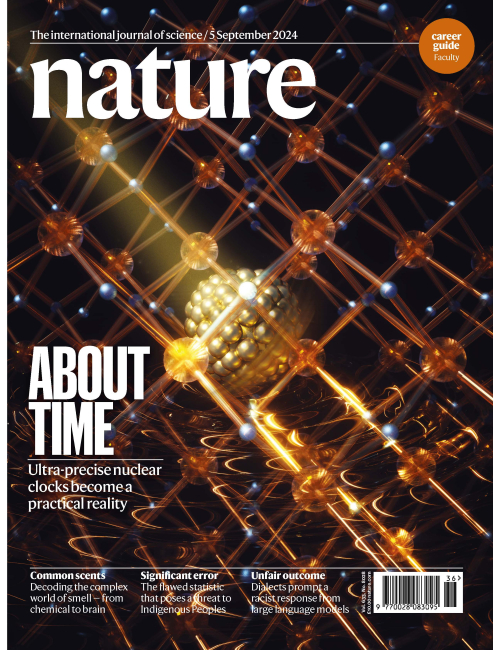Frequency ratio of the 229mTh nuclear isomeric transition and the 87Sr atomic clock
| Author | |
|---|---|
| Abstract |
Optical atomic clocks1,2 use electronic energy levels to precisely keep track of time. A clock based on nuclear energy levels promises a next-generation platform for precision metrology and fundamental physics studies. Thorium-229 nuclei exhibit a uniquely low-energy nuclear transition within reach of state-of-the-art vacuum ultraviolet (VUV) laser light sources and have, therefore, been proposed for construction of a nuclear clock3,4. |
| Year of Publication |
2024
|
| Date Published |
2024-09-01
|
| Journal Title |
Nature
|
| Volume |
633
|
| Issue |
8028
|
| Start Page or Article ID |
63-70
|
| ISBN Number |
1476-4687
|
| DOI | |
| URL | |
| Download citation | |
| JILA PI | |
| Related Publications | |
| Related JILA Highlights | |
| Associated Institutes | |
Journal Article
|
|
| JILA Topics | |
| Publication Status | |
| Publication Image |

|


 The Physics Frontiers Centers (PFC) program supports university-based centers and institutes where the collective efforts of a larger group of individuals can enable transformational advances in the most promising research areas. The program is designed to foster major breakthroughs at the intellectual frontiers of physics by providing needed resources such as combinations of talents, skills, disciplines, and/or specialized infrastructure, not usually available to individual investigators or small groups, in an environment in which the collective efforts of the larger group can be shown to be seminal to promoting significant progress in the science and the education of students. PFCs also include creative, substantive activities aimed at enhancing education, broadening participation of traditionally underrepresented groups, and outreach to the scientific community and general public.
The Physics Frontiers Centers (PFC) program supports university-based centers and institutes where the collective efforts of a larger group of individuals can enable transformational advances in the most promising research areas. The program is designed to foster major breakthroughs at the intellectual frontiers of physics by providing needed resources such as combinations of talents, skills, disciplines, and/or specialized infrastructure, not usually available to individual investigators or small groups, in an environment in which the collective efforts of the larger group can be shown to be seminal to promoting significant progress in the science and the education of students. PFCs also include creative, substantive activities aimed at enhancing education, broadening participation of traditionally underrepresented groups, and outreach to the scientific community and general public.